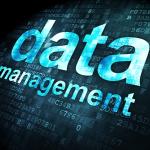Even if last six years I have been specialized in Data management, I still follow (thanks...
 A couple of weeks ago I joined the meeting of the Amsterdam FP&A Board where we discussed the subject of the FP&A analytical transformation. In the course of the meeting the participants mentioned their current main concerns, some of which such as Data ownership, Data quality, and Business Glossary (‘Speaking the same language’). This surprised me. Why? Because these topics are ‘hot’ topics of Data Management (DM) with no common vision on the subject.
A couple of weeks ago I joined the meeting of the Amsterdam FP&A Board where we discussed the subject of the FP&A analytical transformation. In the course of the meeting the participants mentioned their current main concerns, some of which such as Data ownership, Data quality, and Business Glossary (‘Speaking the same language’). This surprised me. Why? Because these topics are ‘hot’ topics of Data Management (DM) with no common vision on the subject.
As a result, I decided to write several articles on these topics for FP&A professionals. The main purpose is to share some knowledge and practical experience and to start a discussion about these subjects.
In this article, I would like to talk about the following questions: How to recognize a Data owner? and What the Data owner is accountable for?
I was deeply touched when some of the participants said they considered FP&A to be the owner of all data that comes to the department. The arguments were: ‘FP&A makes reports’, ‘Nobody else wants to take responsibility’. I wonder how many of you also share this vision?
To create a common opinion on the subject, let’s explore the following questions first:
- What is data and what happens to the data within an enterprise?
- Which roles are recognized in data-related areas and why?
- How to spot a Data owner?
- What are the responsibilities of a Data owner?
What is data and what happens to data within an enterprise?
Case study: an account officer of your company closed a deal with a new customer and signed a contract. He/she provides data about the customer and the contract. First, the data is input in the CRM system. Then the data moves to the Financial system and DWH undergoing some processing and finally the reaches FP&A department to be used in reports.
Using Data management language, Customer and Contract data (facts represented as text, numbers, graphics, images, sound, or video) went through the data life cycle (creation, transformation, and usage) through different applications. In the process, the Data has been transformed, aggregated, etc. These transformations could have taken place according to different business rules. When data got into some context (in the form of a report) it turned into Information (data within a certain context and timeframe, that have a particular meaning [1] ). It could happen that the Data lifecycle has been embedded in different business processes and went through different departments.
What kind of Data has been involved in our Case Study? Customer data is considered to be a Master data, Contract data is usually classified as Transactional data. Business rules are also some sort of data, which usually defined as Meta-data (data about data).
So, on our journey to define Data owner we need to take into consideration several contexts:
- Data ownership (taking into account its different types: Reference and Master data, Transactional Data, Metadata);
- Data lifecycle;
- Data governance;
- Data in Systems & Technology.
Which roles are recognized in the data-related area and why?
You might become lost as there are plenty of Data-related roles described in different sources. I came across Data owners, stewards, users, providers etc. I was always curious: if I were a person who has to play several roles simultaneously, would I get an A4 paper with a clear description of what I have to do on a daily basis?
I think one of the reasons for such a variety of functions, is that the creators of these functions do not put them in the relevant context (like the four, that we have just identified above).
So, let us concentrate only on the context of Ownership and let us continue with the Customer and Contract data example.
How to spot a Data owner?
We all know that it is difficult to find volunteers within your company who would say ‘I am a Data owner’. How can you prove that somebody is actually a Data owner? Years ago, while setting up Data ownership responsibilities within a company, we developed a list of questions that helped in Data ownership recognition. Some of them are presented below:
- Who can verify the accuracy (correctness) [2] and completeness [3] of the data?
- Who runs the biggest operational risk when the data is not correct?
- Which department would act differently when data defies expectations?
- Can the ownership be directly deduced from a department’s responsibilities?
- When there is more than one department that matches in the above-sketched profile, which one wins?
Now I am convinced that the solution is quite simple. There are two unambiguous ‘recognition’ criteria for a Data owner which are an ability and an authority to:
- verify accuracy and completeness of the data
- manage the data
One small detail (where the Devil is): these rules are applicable for unchanged data. As soon as data has been transformed it might change an owner.
Let’s get back to the Case Study to get a clear picture.
Customer data (name, address, country of residence etc.) stays unchanged till it reaches the FP&A department. So, if you as FP&A professional discover some mismatch or finds that the data is not fully complete, what will you do? Who will be able to verify accuracy and completeness of the data and fill in gaps? As for me, only one answer is possible: The Account Officer is the Data owner.
Contract data, such as e.g. the contract amount might stay unchanged till it reaches FP&A department. And it still the Account officer who might verify the accuracy of the contract amount. But let’s assume that you will need to convert the amount into another currency, decide which exchange rate to apply or aggregate the data according certain rules… What does it mean? From the moment when these data transformations take place, you, FP&A professional, become the data owner. The same rule is applied for the rules that you might apply to transform data because these rules are also data.
What is a Data owner responsible for?
I will offer some general responsibilities for your consideration, but I need to warn you that these responsibilities might vary for each company. Why? The responsibilities are dependable on the size of the organization and overlap with responsibilities of other roles that might exist (such as System owner, Business process owner etc.).
So, a Data owner is accountable (based on RACI) for:
- correct and thorough completion of a data-related deliverable or task;
- definition of Data: what information is to be brought into a system, assigning the meaning to the collection of data, data definitions;
- Authorization of Access and Validation of Security;
- Maintenance of data, including managing the data input process and data quality;
- Data supply from third parties;
- Data quality, including setting up requirements and maintaining data quality;
- Management of business rules;
- Archive/ Remove/ Delete;
- The correct execution of these procedures. The execution itself can be delegated to other business functions.
I hope that the article provokes more questions and arguments that I would like to discuss with you. Feel free to contact FP&A Board and me if you want advice on how to apply these concepts within your company.

[1] DAMA Dictionary, p.66
[2] Accuracy is freedom from mistake or error, conformity to truth or to a standard, exactness, the degree of conformity of a measure to a standard or true value, DAMA Dictionary, p.12
[3] Completeness is the quality of being whole or perfect and having nothing missing, Cambridge Dictionary [http://dictionary.cambridge.org/dictionary/english/completeness]
Subscribe to
FP&A Trends Digest

We will regularly update you on the latest trends and developments in FP&A. Take the opportunity to have articles written by finance thought leaders delivered directly to your inbox; watch compelling webinars; connect with like-minded professionals; and become a part of our global community.




